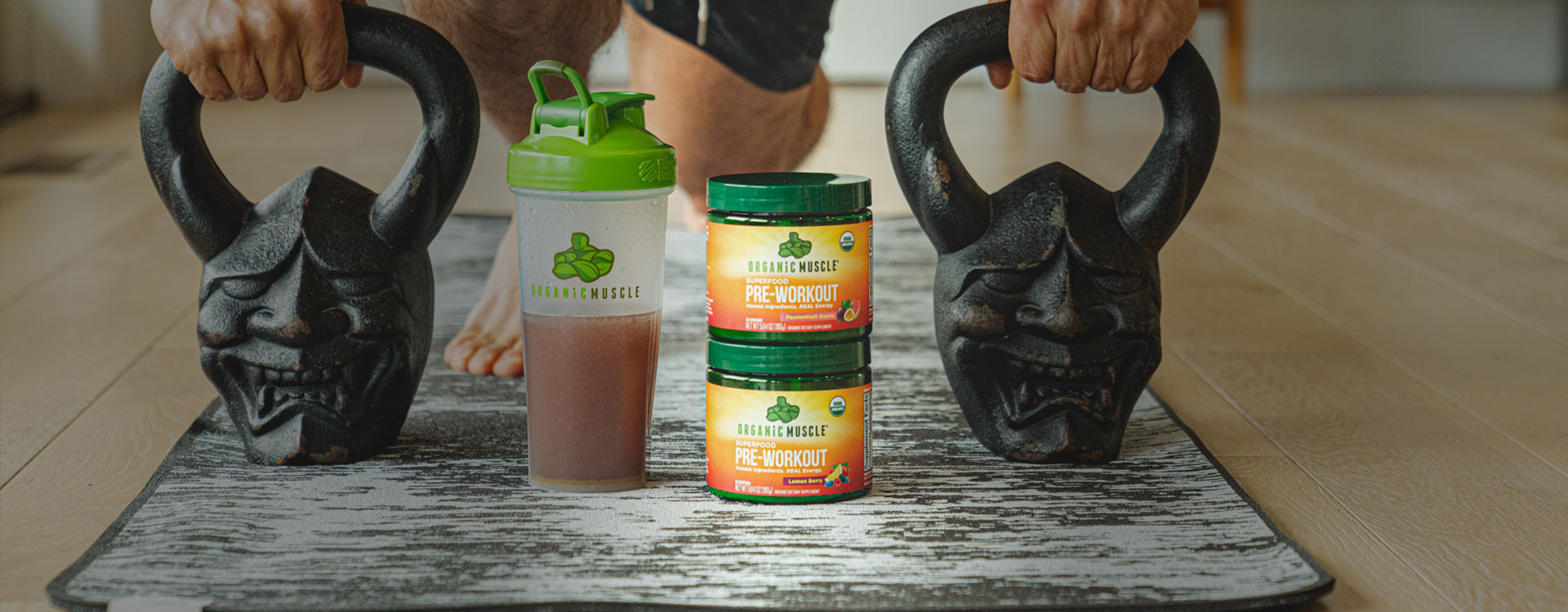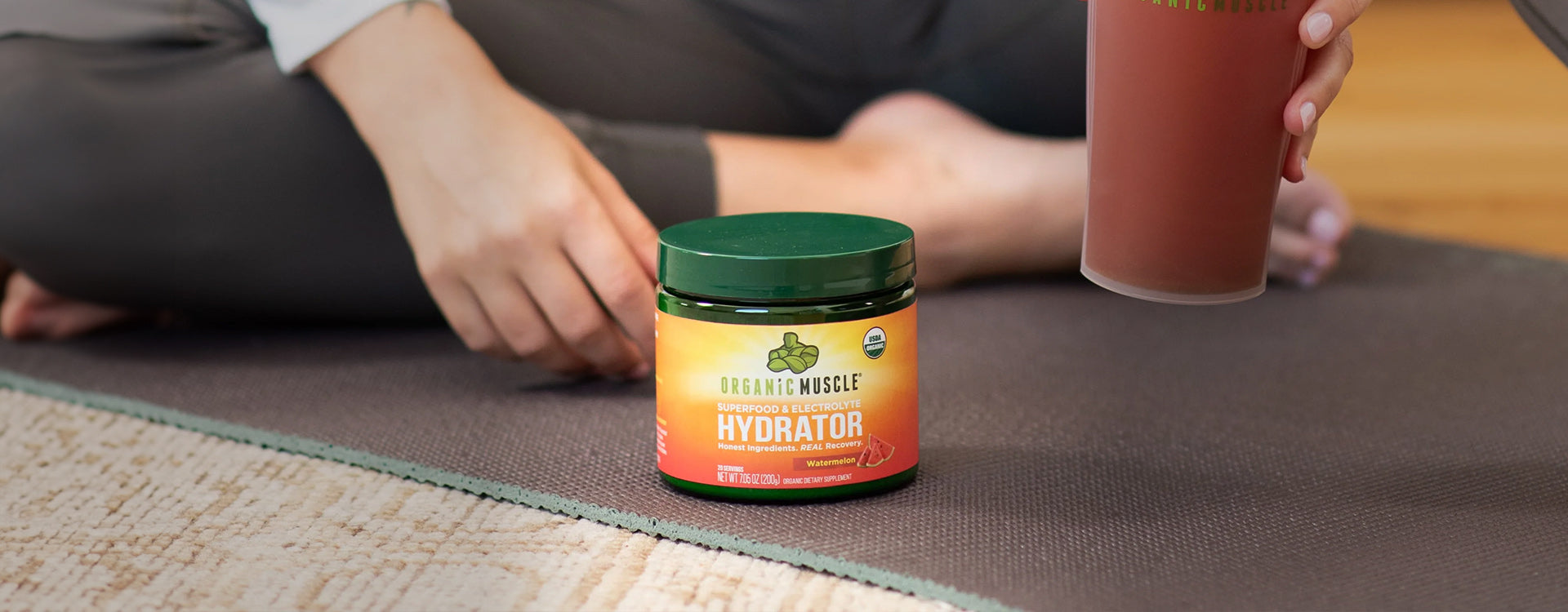Key Takeaways:
- Comprehensive Core Strength: Lower abs are crucial for a well-rounded core, enhancing stability, balance, and athletic performance.
- Beyond Aesthetics: Targeting lower abs improves posture, reduces back pain, and boosts overall well-being.
- Effective Training: To achieve optimal results, incorporate various exercises, focus on proper form, and gradually increase intensity.
Tightening and toning the lower abdominals is a common goal among fitness and health enthusiasts. The journey to achieving a sculpted and strengthened core can often feel elusive, especially for those stubborn lower abs. But with the right approach and exercises, you can effectively target this challenging area, improving your physical appearance and overall health and wellness. Understanding the significance of the lower abs in your core's structure is crucial, as they play a key role in various movements and are essential for stability and strength.
In this article, we will guide you through the best lower ab workouts that aim to tighten and tone your core and complement your dedication to a healthier lifestyle. Whether you’re a beginner or an advanced fitness enthusiast, these exercises are designed to challenge and progress your lower abdominal strength.
Why Lower Ab Workouts Are Essential For A Sculpted Core
While upper abs often steal the spotlight, lower abs are equally essential for a sculpted and functional core. These often-overlooked muscles are vital in core stability, balance, and overall athletic performance.
Core Stability:
- Improved Posture: Strong lower abs help maintain proper posture, reducing strain on your back and neck.1
- Reduced Risk of Injury: A strong core, including the lower abs, can help prevent injuries by providing stability during physical activities.
- Enhanced Balance: Lower abs contribute to your body's balance and coordination, making you less prone to falls and slips.
Athletic Performance:
- Increased Power: A strong core, including the lower abs, is essential for generating power in golf, tennis, and baseball.2
- Improved Endurance: A well-developed core can enhance endurance during activities requiring sustained effort.
- Enhanced Agility: Lower abs contribute to your body's agility and quickness, allowing you to react and move efficiently.
Aesthetics:
- Defined Midsection: Well-developed lower abs can significantly improve the appearance of your midsection, creating a more sculpted and visually appealing physique.
- Complementary to Upper Abs: Balancing lower ab workouts with upper ab exercises creates a harmonious and aesthetically pleasing core.
Why Target Lower Abs: Benefits Beyond Aesthetics
While many focus on lower ab workouts for the toned, sculpted look, the benefits go far beyond aesthetics. Strengthening your lower abs offers several functional advantages that can improve your fitness and well-being. Here’s why targeting the lower abs is crucial:
Enhanced Core Stability
Lower abs play a key role in stabilizing your core, essential for maintaining proper posture, balance, and movement. A strong core supports your spine and pelvis, reducing the risk of injury during daily activities and exercises like lifting or running.
Better Functional Movement
Everyday movements like bending, lifting, and twisting depend on your core muscles. Targeting your lower abs improves functional strength, making daily tasks easier and more efficient. Whether picking up groceries or engaging in recreational activities, strong lower abs help you move more easily and efficiently.
Reduced Lower Back Pain
Weak lower abs can contribute to poor posture and lower back pain.3 Strengthening the muscles in this area helps support the lumbar spine, reducing strain and discomfort. A strong core balances the abdominals and lower back, helping alleviate or prevent chronic pain.
Posture and Alignment
Strengthening your lower abs improves your posture by keeping your pelvis properly aligned. This can reduce strain on your spine, enhancing your overall body alignment and appearance. Good posture also reduces muscle tension and stress in the back and neck areas.
Enhanced Breathing Efficiency
Lower ab muscles are involved in diaphragmatic breathing. Strengthening these muscles can improve breathing efficiency, allowing for deeper breaths and better oxygen flow during workouts, enhancing endurance and performance.
Targeting your lower abs delivers significant benefits that extend beyond a six-pack. Incorporating lower ab exercises into your fitness routine helps with aesthetics, boosts core strength, improves functional movement, and enhances overall athletic performance.
Essential Lower Ab Exercises: A Beginner's Guide
Toning and tightening the lower abdomen is a common goal for fitness enthusiasts, yet it remains one of the more challenging areas to target effectively. However, with the right exercises and a commitment to your overall health, achieving a strong, defined lower abdomen is within your reach.
Below, we outline a series of lower ab workouts perfect for beginners, laying the foundation for a solid core and contributing to overall holistic wellness.
Leg Raises
Leg Raises are a fundamental exercise that specifically targets the lower abdomen. To perform this exercise:
- Lie flat on your back on a yoga mat, legs extended.
- Slowly raise your legs to a 90-degree angle, keeping them straight and pressed together.
- Lower them back down without letting your feet touch the floor.
- Repeat for 10-15 reps.
Scissors
The Scissors exercise targets the lower abs and stimulates the obliques.
- Begin by lying flat on your back, hands underneath your buttocks for support.
- Lift both legs slightly off the ground and alternate, crossing them over each other in a scissor-like motion.
- Keep the movements controlled for a set of 15-20 crosses.
Mountain Climbers
Mountain Climbers are excellent for engaging the whole core, with a pronounced effect on the lower abdomen.
- Start in a plank position, ensuring your body forms a straight line from head to heels.
- Drive one knee towards your chest, then quickly switch to the other leg, simulating a running motion.
- Aim for 30 seconds to 1 minute of continuous movement.
Plank Hip Dips
This variation of the traditional plank further activates the lower abdominal muscles and obliques.
- Begin in an elbow plank position, forming a straight line with your body.
- Rotate your hips to one side, dipping them towards the floor, then switch to the other side.
- Perform 10 dips on each side.
Reverse Crunches
Reverse crunches concentrate the effort in the lower abdomen, making them an essential part of any lower ab workout.
- Lie on your back with your arms at your sides, palms facing down.
- Lift your legs and bend your knees at a 90-degree angle.
- Use your lower abs to pull your knees towards your chest, lifting your hips off the floor.
- Slowly return to the starting position. Repeat for 10-15 reps.
Incorporating these exercises into your routine consistently will yield significant improvements in lower ab strength and definition.
Intermediate Lower Ab Workouts: Building On Your Foundation
After mastering the basics of lower ab workouts, it's time to challenge your muscles further and continue progressing toward a tighter, more toned abdomen. Intermediate exercises are designed to build on your foundation with increased intensity and complexity. They engage the lower abdominals and integrate other core muscles for a comprehensive workout. Here are some effective intermediate lower ab workouts to incorporate into your fitness routine:
Leg Raises with a Twist
- How to do it: Lie on your back with your hands placed beneath your glutes for support. Raise your legs to a 90-degree angle, then lower them back down without touching the floor. As you lower your legs, add a slight twist to engage the obliques.
- Why it’s effective: This leg raise variation intensifies the workout by involving the obliques, offering a more comprehensive core strengthening exercise.
Mountain Climbers with a Stability Ball
- How to do it: Place your hands on a stability ball with your body in a plank position. Drive one knee towards your chest, then quickly switch to the other knee, maintaining a brisk pace.
- Why it’s effective: The ball's instability increases core engagement, particularly in the lower abs, making this a dynamic and challenging workout.
Flutter Kicks Over a Block
- How to do it: Lie on your back with your hands under your buttocks for support. Place a yoga block or a similar object between your feet. Lift your legs slightly off the ground and perform flutter kicks over the block, keeping your lower back pressed into the floor.
- Why it’s effective: The added challenge of moving over an obstacle prevents you from using momentum, forcing your lower abs to work harder.
Scissor Switch
- How to do it: Lie on your back with your hands behind your head, legs extended upwards. Lower one leg towards the floor without touching it, then switch legs in a scissor motion.
- Why it’s effective: This exercise puts continuous tension on the lower abs and increases flexibility in the legs, providing a dual benefit.
Plank Hip Dips
- How to do it: Begin in a forearm plank position, ensuring your body forms a straight line from head to heels. Rotate your hips to one side, dipping them towards the floor, then switch to the other side.
- Why it’s effective: By integrating rotational movement, this exercise enhances oblique strength and helps sculpt a tighter waistline, as well as targeting the lower abs.
Advanced Lower Ab Training: Pushing Your Limits
Incorporating advanced exercises can accelerate your journey toward achieving a well-defined and toned midsection when elevating your ab training routine to target the often elusive lower abdominals. Tailoring your workout regimen to include focused lower ab workouts not only enhances core strength but also aids in reducing lower belly fat, culminating in a more sculpted appearance.
The Importance of Progressive Overload
Progressive overload is key to continuously challenging your lower abs. This principle involves gradually increasing the intensity of your workouts over time, stimulating muscle growth and strength. You can achieve this by adding more repetitions, increasing resistance, or incorporating more complex exercises as your endurance and strength improve.
Advanced Exercises to Incorporate
- Hanging Leg Raises: Begin by hanging from a pull-up bar with a firm grip. Keeping your legs straight, lift them in front of you as high as possible, aiming for a 90-degree angle with your body. Slowly lower them back down without letting your feet touch the ground between repetitions. This exercise intensely activates the lower abdominal muscles and enhances grip and forearm strength.
- Dragon Flags: Popularized by Bruce Lee, dragon flags demand significant core strength and control. Lie on a bench and grip it firmly above your head. Keeping your body straight, lift your legs and torso off the bench until you balance your shoulders, forming a straight line from shoulders to toes. Then, lower yourself back down in a controlled manner without letting your body touch the bench until the final repetition.
- Abdominal V Holds with Rotation: Sit on the floor with your legs extended. Lift your legs slightly off the ground and lean back to form a V shape with your body. Holding this position, rotate your torso to the left and right, engaging the lower abs and obliques. This exercise adds an advanced twist to the traditional V hold, targeting the lower abs and enhancing rotational core strength.
- Toes to Bar: Similar to hanging leg raises, this exercise requires hanging from a pull-up bar. However, instead of stopping at a 90-degree angle, the goal is to touch the pull-up bar with your toes. This motion significantly increases the difficulty and further engages your lower abs.
Incorporating Lower Ab Workouts Into Your Routine: Tips And Strategies
Incorporating lower ab workouts into your fitness routine is essential for achieving a toned and strong core. However, careful consideration and strategic planning are required to ensure effectiveness and prevent injury. Here are some practical tips and strategies to seamlessly integrate lower ab exercises into your workout plan:
Start with a Warm-Up
Before engaging in any core exercises, especially those targeting the lower abs, starting with a warm-up is crucial. A 5-10 minute cardio routine or dynamic stretching can prepare your body for the workout, enhancing performance and reducing the risk of injury.
Gradually Increase Intensity
If you're new to lower ab workouts or fitness in general, start with basic exercises and gradually increase the intensity and complexity. This approach helps build a strong foundation, make your abs more resilient, and prepare you for more challenging workouts.
Focus on Form
Maintaining proper form is paramount when performing lower ab workouts. Incorrect form reduces the effectiveness of the exercise and puts you at a higher risk of injuries. Pay attention to your body's alignment and adjust as needed to ensure you engage the correct muscles.
Incorporate a Variety of Exercises
The lower abdomen can be a stubborn area to tone, so it's important to incorporate various exercises targeting this area from different angles. Doing so will challenge your muscles uniquely, leading to better results. Some effective lower ab workouts include leg raises, mountain climbers, and reverse crunches.
Stay Consistent
Consistency is key to seeing results from lower ab workouts. Aim to include these exercises in your routine at least 2-3 times a week. Remember, it's not about how many exercises you do in a single session but rather the regularity and consistency of your efforts over time.
Listen to Your Body
As with any workout regimen, listening to your body and adjusting accordingly is crucial. If you experience pain (beyond typical muscle fatigue), it's a sign to pause and reassess your approach. Always prioritize safety and well-being over pushing through discomfort.
Supplement Your Efforts
Consider incorporating high-quality supplements into your routine to maximize the results of your lower ab workouts. Organic Muscle offers certified organic, non-GMO, vegan, gluten-free, keto-friendly, and dairy-free supplements. These supplements are carefully formulated without chemicals, hormones, sucralose, and preservatives, ensuring you're holistically supporting your health and fitness goals.
Common Lower Ab Workout Mistakes: Avoid These Pitfalls
When embarking on the journey to strengthen and tone your lower abs, it's crucial to be informed about common pitfalls that can hinder progress and possibly lead to injury. Below, we outline the mistakes to avoid to ensure your lower ab workouts are effective and safe.
Skipping Warm-Up
One of the most overlooked aspects of any workout routine, especially lower ab workouts, is the importance of a proper warm-up. Jumping straight into intense exercises without preparing your muscles can lead to strains and injuries. A brief 5 to 10-minute cardio session or dynamic stretching can significantly enhance your performance and reduce the risk of injury.
Using Incorrect Form
Incorrect form not only diminishes the efficacy of your workout but also poses a significant risk of injury. Each lower ab workout requires a specific posture and movement to effectively target the intended muscles. It's crucial to research or consult a fitness professional to ensure that your form is correct. Remember, quality over quantity; performing fewer reps correctly is far more beneficial than numerous incorrect ones.
Overemphasizing Quantity Over Quality
Many believe that the number of repetitions or the duration determines a successful workout. However, when it comes to lower ab workouts, the focus should always be on the quality of each movement. Performing exercises with controlled, deliberate motions ensures that the correct muscles are engaged, maximizing the effectiveness of your workout while minimizing the risk of injury.
Neglecting Other Core Muscles
Focusing solely on the lower abs can lead to an imbalance in core strength, which may affect posture and overall fitness. It's essential to incorporate exercises that target the entire core, including the upper abs, obliques, and lower back, to ensure balanced development and improve overall stability and strength.
Overtraining
While enthusiasm and dedication are commendable, overtraining can lead to exhaustion, muscle strains, and setbacks in your fitness journey. Your muscles require time to recover and strengthen after each workout. Incorporating rest days into your routine and listening to your body's signals are crucial to preventing overtraining.
Measuring Progress: Tracking Your Lower Ab Gains
As fitness and health enthusiasts diligently incorporate lower ab workouts into their regimens, tracking progress becomes a cornerstone of success. Transforming your core, especially your lower abdomen, involves a commitment to your workout routine and a holistic approach to health.
Start with a Baseline
Before diving deep into lower ab workouts, it's essential to establish a baseline. This isn't just about physique; it’s about understanding your fitness level, including strength and endurance. Record details such as how many repetitions of each exercise you can perform and note any struggles or areas of discomfort. This initial evaluation serves as your personal benchmark against which all future progress will be measured.
Regular Check-Ins
Consistency is key in measuring progress in any fitness journey. Set regular bi-weekly or monthly intervals to reevaluate your performance against your baseline. Improvement can be seen in various forms - an increase in repetitions, enhanced form, or even the ability to perform initially challenging exercises. Remember, progress is progress, no matter how small.
Visual Documentation
In addition to tracking your performance statistics, visual documentation is a highly effective tool. Regular photos in a consistent pose can help highlight changes that numbers alone might not reveal. These visual records can be particularly encouraging, serving as a tangible representation of your dedication and hard work.
Assessing Feel and Fit
Another aspect of measuring your progress goes beyond the visible and quantifiable. Pay attention to how you feel. Improvements in core strength can manifest as better posture, reduced back pain, and an overall increase in physical confidence. Additionally, the fit of your clothing can offer clues to changes, with a tighter lower abdomen area signaling success.
Final Thoughts
Incorporating lower ab workouts into your fitness regimen is about achieving a visually appealing midsection and strengthening your core to support overall body health and functionality. Embracing a variety of exercises, we explored—from leg raises to planks—ensures a comprehensive approach to tone and tighten your lower abs.
Remember, consistency is key to seeing results. Pairing these workouts with Organic Muscle's certified organic, non-GMO, vegan, gluten-free, keto-friendly, dairy-free supplements can significantly optimize your fitness journey. Our products are designed to complement your efforts in the gym by providing the clean, high-quality fuel your body needs to recover and thrive.
As you embark on this journey to tighten and tone your lower abs, let our commitment to holistic wellness guide you. With safety and efficacy at the forefront of our formulation, you're not just investing in fitness; you're investing in a lifestyle embraced by health and wellness enthusiasts worldwide. Stay motivated, remain patient, and keep pushing your limits. After all, with Organic Muscle, you have a partner committed to your health every step of the way.
Read also:
- 10 Best Ab Workouts To Sculpt Your Core
- Best Glute Workouts For A Stronger, Rounder Booty
- How To Build Muscle On A Vegan Diet: Secrets From Top Plant-Based Athletes
Frequently Asked Questions About The Best Lower Ab Workouts To Tighten And Tone
How often should I train my lower abs?
Aim to incorporate lower ab workouts into your fitness routine 2 to 3 times a week for optimal results. This allows your muscles sufficient time to recover and rebuild stronger. Remember, balance is key; overtraining can lead to the risk of injury and counterproductive results.
How long does it take to see results from lower ab workouts?
The timeline to see tangible results from lower ab workouts varies from person to person, depending on your starting point, consistency, and overall lifestyle. Generally, you can start seeing changes in 4 to 6 weeks with a dedicated workout routine and a balanced diet. Remember, consistency is key.
How can I avoid lower back pain during ab exercises?
To avoid lower back pain during ab exercises, maintain proper form throughout each exercise. Engage your core, ensure your back is flat against the floor when lying down, and avoid straining your neck. Additionally, strengthening your lower back through complementary exercises can help prevent pain and injury.
What foods should I eat to complement my lower ab workouts?
A balanced diet of fruits, vegetables, lean proteins, and whole grains can significantly complement your lower ab workout routine. Fiber foods can aid digestion and help achieve a flat stomach. Incorporating our Certified Organic, non-GMO, and Gluten-Free supplements into your diet can also support muscle recovery and overall health.
How do I prevent neck strain during lower ab exercises?
To prevent neck strain, focus on using your abdominal muscles to perform the movement rather than pulling on your neck. Ensure your hands gently support your head, and keep your chin slightly tucked rather than lifting towards the ceiling. If you experience neck pain, pause and adjust your form.
What's the best time of day to do lower ab workouts?
The best time for lower ab workouts is whenever it fits your schedule, allowing you to be consistent. Whether you prefer to kickstart your day with a morning workout or wind down in the evening, what matters most is finding a time that works for you and sticking with it for the best results.
Sources:
- doctormmdev. (2024, May 16). Premier Spine Institute PLLC. Premier Spine Institute PLLC. https://premierspineinstitute.com/building-a-strong-core-is-your-best-defense-against-back-pain/
- Rodríguez-Perea, Á., Reyes-Ferrada, W., Jerez-Mayorga, D., Chirosa Ríos, L., Van den Tillar, R., Chirosa Ríos, I., & Martínez-García, D. (2023). Core training and performance: a systematic review with meta-analysis. Biology of Sport, 40(4). https://doi.org/10.5114/biolsport.2023.123319
- How can a weak core affect your low back? (2023, April 24). Www.grahamchiropracticlouisville.com. https://www.grahamchiropracticlouisville.com/how-can-a-weak-core-affect-your-low-back
|
Disclaimer: Organic Muscle products are not intended to treat, diagnose, mitigate, prevent, or cure disease. Organic Muscle products should not replace prescribed medications or the variety of foods important to a healthful diet. |













